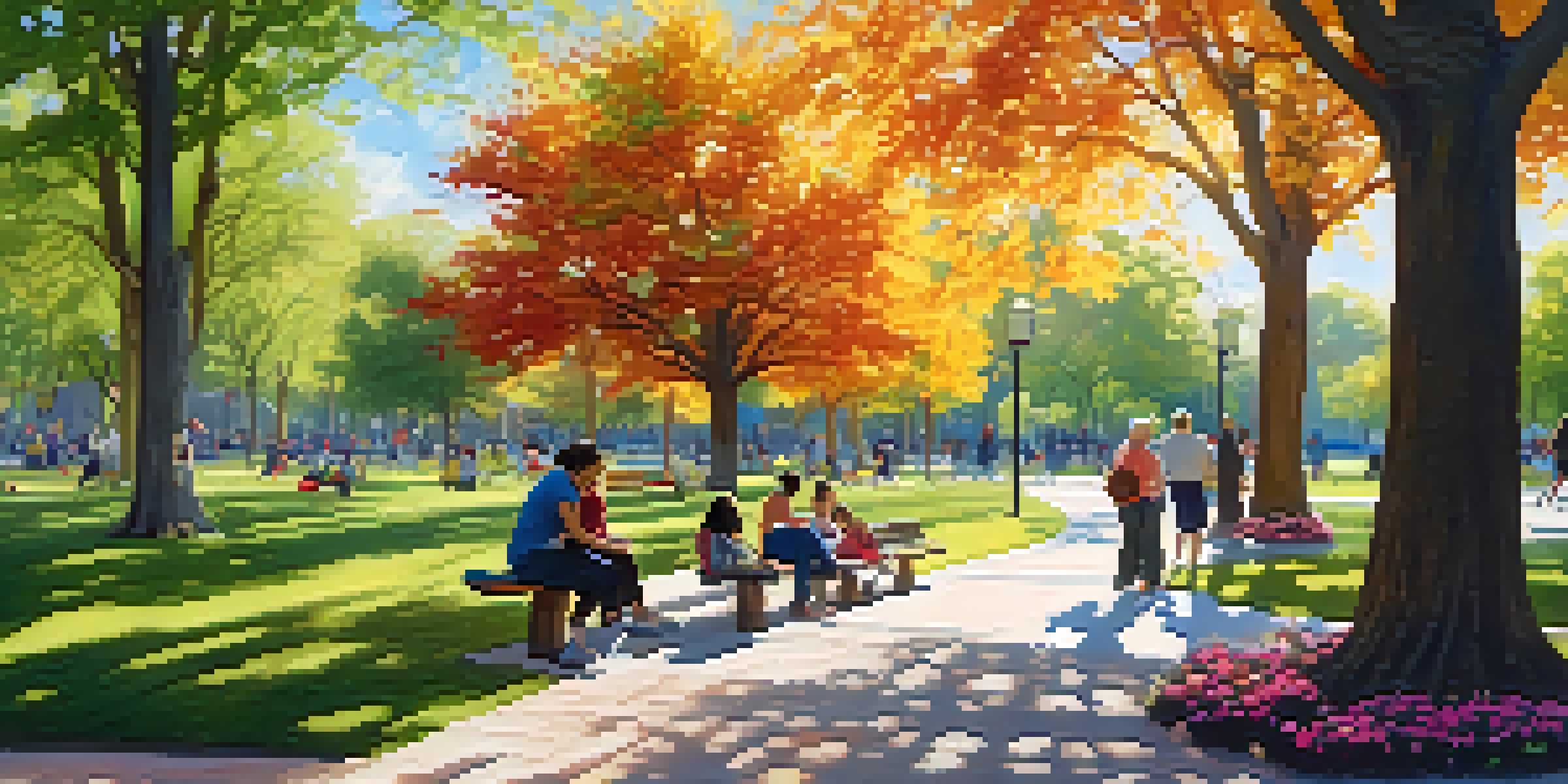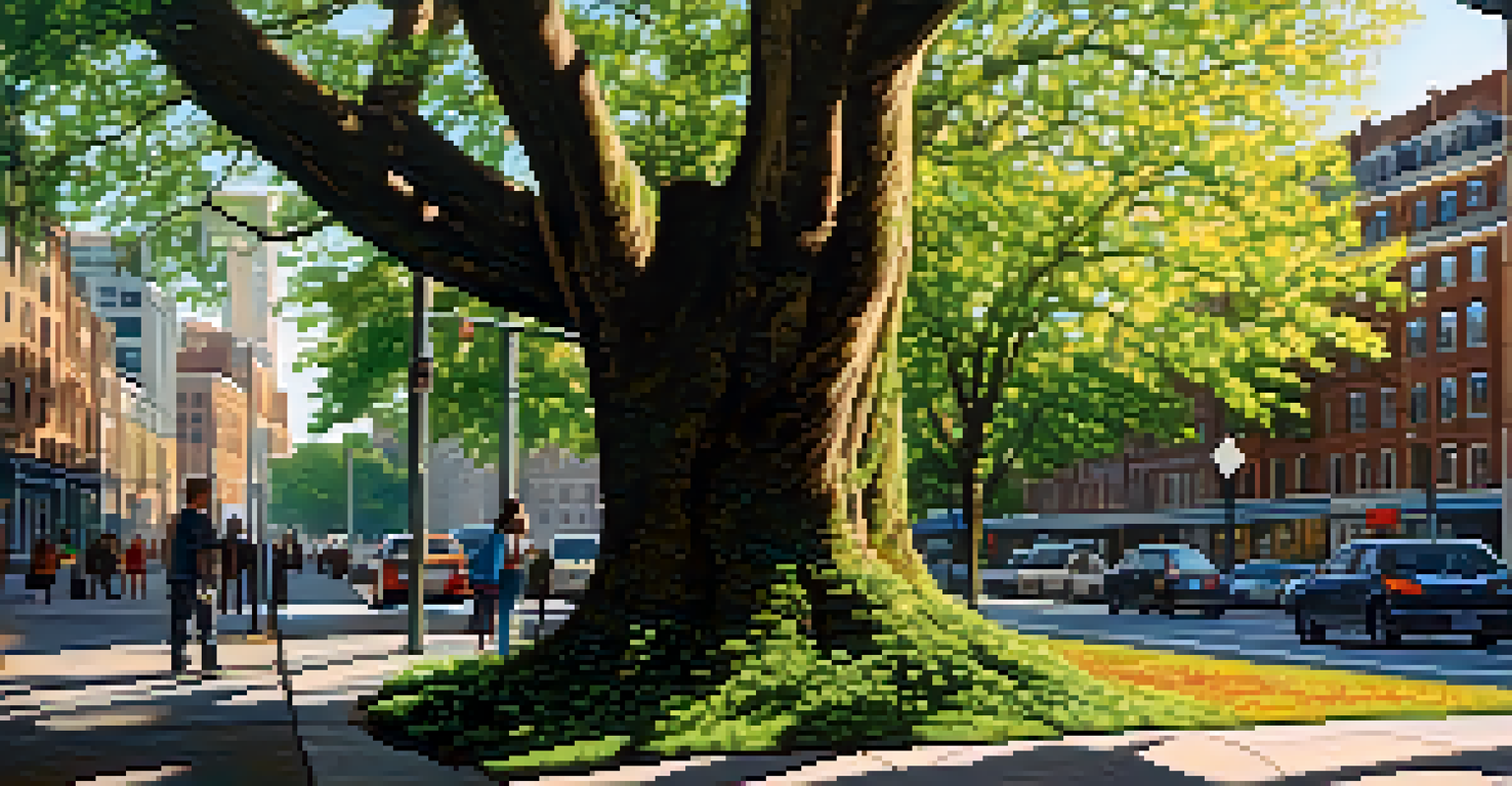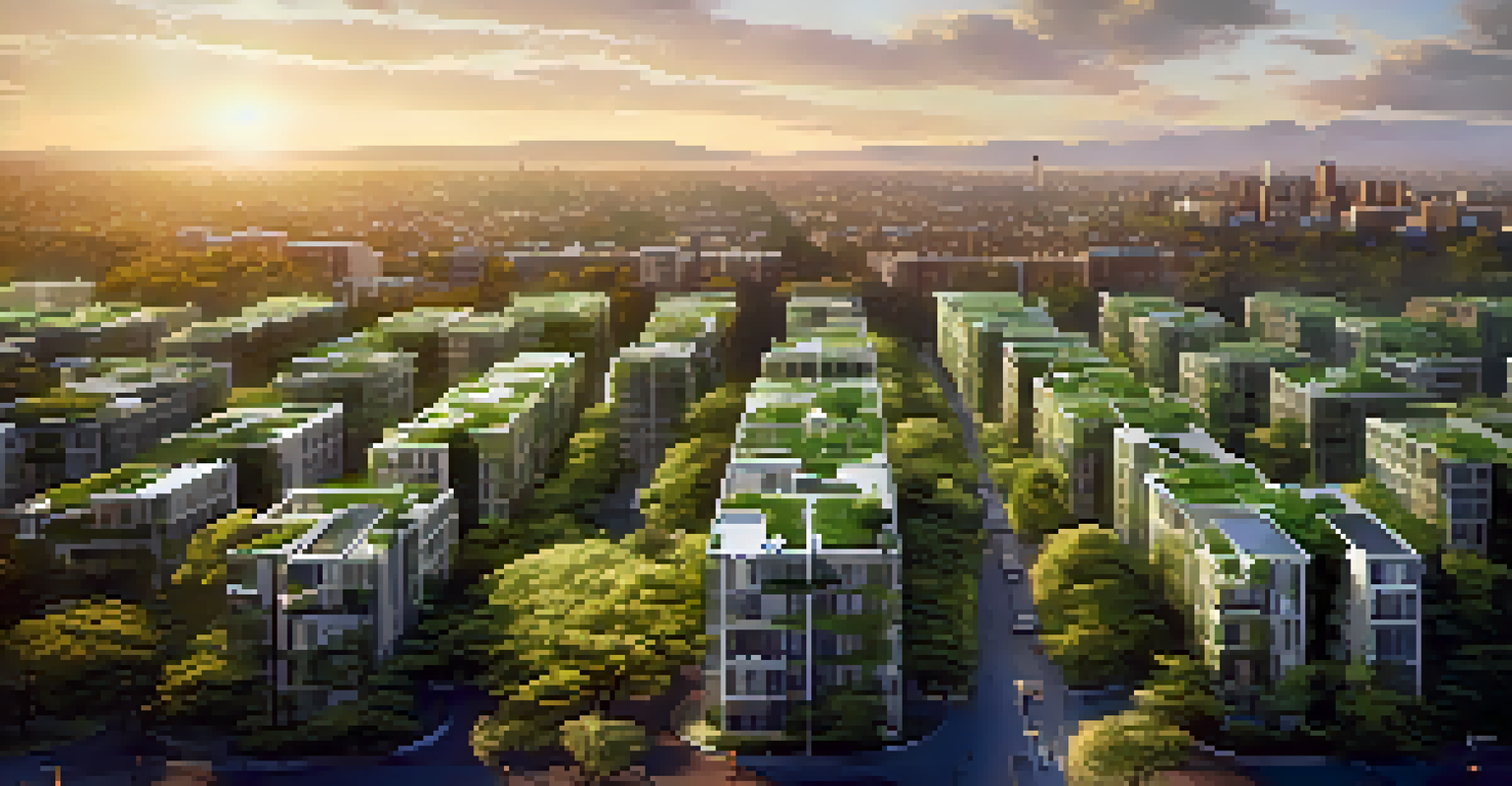The Benefits of Planting Trees for Urban Heat Island Mitigation

Understanding Urban Heat Islands and Their Impact
Urban heat islands (UHIs) occur when cities become significantly warmer than their rural surroundings. This phenomenon primarily results from human activities, such as industrial processes, transportation, and the concentration of buildings and infrastructure. The increase in temperature can lead to various environmental and health problems, making it essential to address UHI effects.
The best time to plant a tree was twenty years ago. The second best time is now.
Higher temperatures in urban areas can exacerbate air pollution, leading to respiratory issues and heat-related illnesses. For instance, during summer months, cities can experience temperatures 5 to 10 degrees Fahrenheit warmer than nearby rural areas. This temperature disparity not only affects people's comfort but also places additional strain on energy systems due to increased demand for cooling.
Mitigating UHI effects is therefore crucial for improving urban living conditions. One effective strategy to combat urban heat is through planting trees, which offer numerous benefits that extend beyond just shade and aesthetics.
How Trees Cool Urban Areas Naturally
Trees are natural air conditioners, providing shade and releasing moisture through a process called transpiration. When sunlight hits tree leaves, they absorb heat and cool the surrounding air, creating a refreshing microclimate. This cooling effect is particularly beneficial in densely built environments, where pavement and buildings absorb and retain heat.

For example, a single mature tree can provide the same cooling effect as ten air conditioning units running for 20 hours a day. When planted strategically, trees can significantly reduce surface and air temperatures, making urban areas more comfortable for residents. This cooling effect also helps to lower energy costs by reducing the need for air conditioning.
Trees Combat Urban Heat Islands
Planting trees can significantly cool urban areas, reducing temperatures and energy demands.
Moreover, the presence of trees can lead to improved urban biodiversity by creating habitats for various species. This not only enhances the aesthetic appeal of the city but also contributes to a healthier ecosystem, which can further mitigate the effects of urban heat.
Improving Air Quality with Urban Trees
Trees play a vital role in improving air quality, which is especially important in urban areas often plagued by pollution. Through the process of photosynthesis, trees absorb carbon dioxide and release oxygen, contributing to cleaner air. They also filter out harmful pollutants like sulfur dioxide and nitrogen oxides, making the air healthier to breathe.
Trees are the earth's endless effort to speak to the listening heaven.
In addition to absorbing pollutants, trees can capture particulate matter on their leaves and bark, preventing these harmful particles from entering the atmosphere. As a result, areas with more trees generally have lower levels of air pollution, leading to healthier living conditions for urban residents. The benefits extend to reduced healthcare costs associated with pollution-related health issues.
Furthermore, improved air quality can enhance overall well-being and mental health. Studies indicate that spending time in green spaces can reduce stress and anxiety, making cities with abundant tree cover more appealing places to live and work.
Enhancing Urban Aesthetics and Community Well-being
Beyond their environmental benefits, trees significantly enhance the aesthetic appeal of urban landscapes. Tree-lined streets and parks create inviting spaces that encourage outdoor activities and community interaction. When people enjoy their surroundings, they are more likely to engage in physical activities, such as walking or jogging, contributing to a healthier lifestyle.
Moreover, the presence of trees can increase property values, making neighborhoods more desirable. Studies show that homes near parks or green spaces often sell for higher prices than those without. This increase in property value can boost local economies, benefiting both residents and businesses.
Improved Air Quality with Trees
Trees enhance air quality by absorbing pollutants and releasing oxygen, promoting healthier urban living.
Trees also foster a sense of community by providing gathering spaces for social activities. Whether through picnics in the park or community events, these green spaces bring people together, enhancing social ties and promoting a sense of belonging.
Trees as a Tool for Stormwater Management
Urban areas often struggle with stormwater runoff due to impervious surfaces like roads and buildings. This runoff can lead to flooding, erosion, and water pollution. Trees help mitigate these issues by absorbing rainwater through their roots and releasing it slowly into the atmosphere through transpiration.
Additionally, tree canopies intercept rainfall, reducing the amount of water that reaches the ground. This natural process can significantly lower the risk of flooding and erosion in urban environments. For instance, a mature tree can absorb around 100 gallons of water during a single storm, acting as a natural sponge for cities.
By incorporating trees into urban planning, cities can create more resilient infrastructures that better manage stormwater. This not only protects urban areas from flooding but also contributes to cleaner waterways, benefiting the entire ecosystem.
Promoting Biodiversity in Urban Settings
Urban environments often lack biodiversity due to habitat loss and fragmentation. By planting trees, cities can create corridors and habitats for wildlife, encouraging a diverse range of species to thrive. These green spaces can serve as crucial refuges for birds, insects, and other fauna that might otherwise struggle to survive in urban settings.
For example, native trees can attract pollinators like bees and butterflies, which are essential for maintaining healthy ecosystems. This not only benefits the local environment but also supports agricultural practices by enhancing pollination in nearby crops.
Trees Foster Community and Value
Green spaces created by trees boost property values and encourage community interaction, enhancing overall well-being.
Moreover, increasing biodiversity in cities can improve overall ecosystem health. A diverse urban ecosystem is more resilient to pests, diseases, and extreme weather events, making it a crucial aspect of sustainable urban development.
Implementing Tree Planting Initiatives Effectively
To maximize the benefits of tree planting for urban heat island mitigation, it's essential to implement effective initiatives. Local governments, community organizations, and residents can collaborate to identify suitable locations for planting trees. Consideration should be given to factors such as species selection, soil conditions, and available space to ensure the trees thrive.
Engaging the community in tree planting efforts can foster a sense of ownership and responsibility towards local green spaces. Educational programs can also raise awareness about the importance of trees and how to care for them. When residents understand the value of their local trees, they are more likely to protect and maintain them.

Additionally, ongoing maintenance is crucial for the success of tree planting initiatives. Regular watering, pruning, and monitoring for pests will help ensure that the trees grow strong and healthy, ultimately maximizing their potential to mitigate urban heat islands and improve overall urban environments.